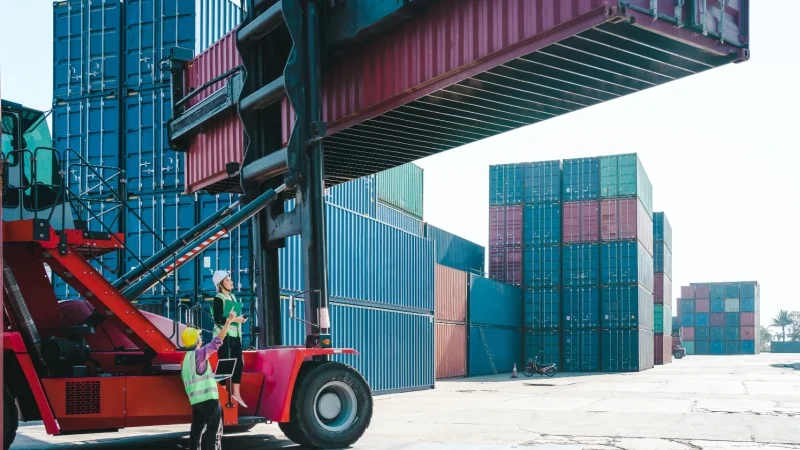When it comes to transporting heavy lift cargo, it requires careful planning and execution. This type of cargo includes large, heavy items that cannot be handled using standard shipping methods. Proper handling and transport of these goods ensure they arrive safely and on time. This blog will explain what heavy life cargo is, its significance, and the best practices for managing its transport.
What is a Heavy Lift Cargo & Why It’s Important?
Industries working in construction, manufacturing, and energy sectors often rely on big lift vessels also known as heavy life cargo for their operations. Timely delivery is essential for maintaining project schedules and productivity. Delays in receiving critical equipment can result in costly downtime, affecting overall business efficiency. Additionally, heavy lift cargo contributes to infrastructure development, energy production, and technological advancements.
Key Considerations for Heavy Lift Cargo
1. Specialized Equipment: Transporting heavy lift cargo requires specialized equipment. Heavy lift vessels and big lift ships are designed to carry large, heavy items safely. These ships feature strong cranes and reinforced decks to support the weight of the cargo. Utilizing the right vessel is crucial for ensuring the integrity of both the cargo and the ship.
2. Proper Planning: Planning is vital when dealing with heavy lift cargo. The heavy lift cargo handling procedure involves multiple steps. First, assess the cargo dimensions and weight. Understanding these specifications is key to determining the best transport method and route. Factors such as environmental conditions, potential hazards, and port limitations must also be taken into account.
3. Qualified Personnel: Handling heavy lift cargo requires skilled personnel. Trained professionals ensure that the cargo is loaded, transported, and unloaded safely. Their expertise minimizes risks and enhances safety. Proper training in handling heavy equipment and adhering to safety regulations is critical. Companies should invest in ongoing training to keep staff updated on best practices and technological advancements.
The Heavy Lift Cargo Handling Procedure
Handling heavy lift cargo involves a specific set of procedures to ensure safety and efficiency. Here’s a detailed breakdown of the steps involved:
Step 1: Pre-Transport Assessment
Before transport, conduct a thorough assessment of the cargo. Measure the dimensions and weight accurately. Identify any special requirements for loading and unloading. This initial evaluation is crucial for effective planning and resource allocation.
Step 2: Selecting the Right Vessel
Choosing the right vessel is crucial for successful transport. A heavy lift ship or big lift vessel may be necessary for larger items. These specialized vessels are equipped with the capabilities to support heavy loads. It’s important to consider the vessel’s route, capacity, and equipment when making this choice. Also, selecting the right freight forwarder is crucial when dealing with heavy lift cargo. They can navigate the complexities of logistics, customs, and compliance.
Step 3: Loading the Cargo
Loading heavy lift cargo requires careful execution. Use cranes or other lifting equipment to place the cargo onto the vessel. Ensure that the weight is evenly distributed to maintain balance during transport. Proper loading techniques can prevent accidents and protect the cargo from damage.
Step 4: Securing the Cargo
Properly securing the cargo is essential to prevent movement during transit. Use straps, chains, or other securing devices to hold the cargo in place. This reduces the risk of damage and accidents. Regular checks during transit help ensure that the cargo remains secure.
Step 5: Transporting the Cargo
Once loaded and secured, the cargo is ready for transport. Monitor the vessel’s stability and the condition of the cargo throughout the journey. Regular checks ensure safety and compliance with regulations. Having contingency plans in place for unforeseen circumstances can further mitigate risks.
Step 6: Unloading the Cargo
Upon reaching the destination, the unloading process begins. Carefully remove the securing devices and use cranes or other equipment to lower the cargo safely. This step requires precision to avoid accidents. Coordination between the crew and the receiving party is essential for a smooth unloading process.
Advantages of Using Specialized Heavy Lift Services
1. Expertise in Handling: A reliable freight forwarder has the experience and resources to handle the shipments efficiently. Their expertise ensures safe and efficient handling throughout the shipping process. They understand the unique challenges posed by heavy lift cargo and can navigate them effectively.
2. Access to Advanced Equipment: These services provide access to the latest technology and equipment. From heavy lift vessels to advanced cranes, they have the tools needed to transport heavy lift cargo safely. Investing in the latest technology enhances operational efficiency and safety.
3. Compliance with Regulations: Transporting heavy items often involves strict regulations. Specialized services ensure compliance with all relevant laws, reducing the risk of delays or fines. They stay updated on local and international shipping regulations, ensuring a smooth process.
4. Customized Solutions: Every heavy lift cargo shipment is unique. Specialized services offer tailored solutions to meet specific requirements. This ensures that each shipment is handled according to its needs, optimizing efficiency and reducing costs.
5. Risk Management: Heavy lift transport comes with inherent risks. Look for a forwarder that specializes in international sea freight forwarding. Specialized companies implement risk management strategies to minimize potential issues. They conduct risk assessments and develop contingency plans to address unforeseen circumstances. This proactive approach helps ensure the safe delivery of cargo.
Transporting heavy lift cargo requires careful planning and execution. Using specialized vessels and following the correct handling procedures ensures that cargo arrives safely. The choice of a reliable freight forwarder is essential for successful transport. Travelite offers comprehensive services for managing heavy lift cargo, ensuring smooth and efficient delivery. By adhering to best practices, companies can successfully navigate the challenges of transporting heavy lift cargo, contributing to the overall success of their operations.










